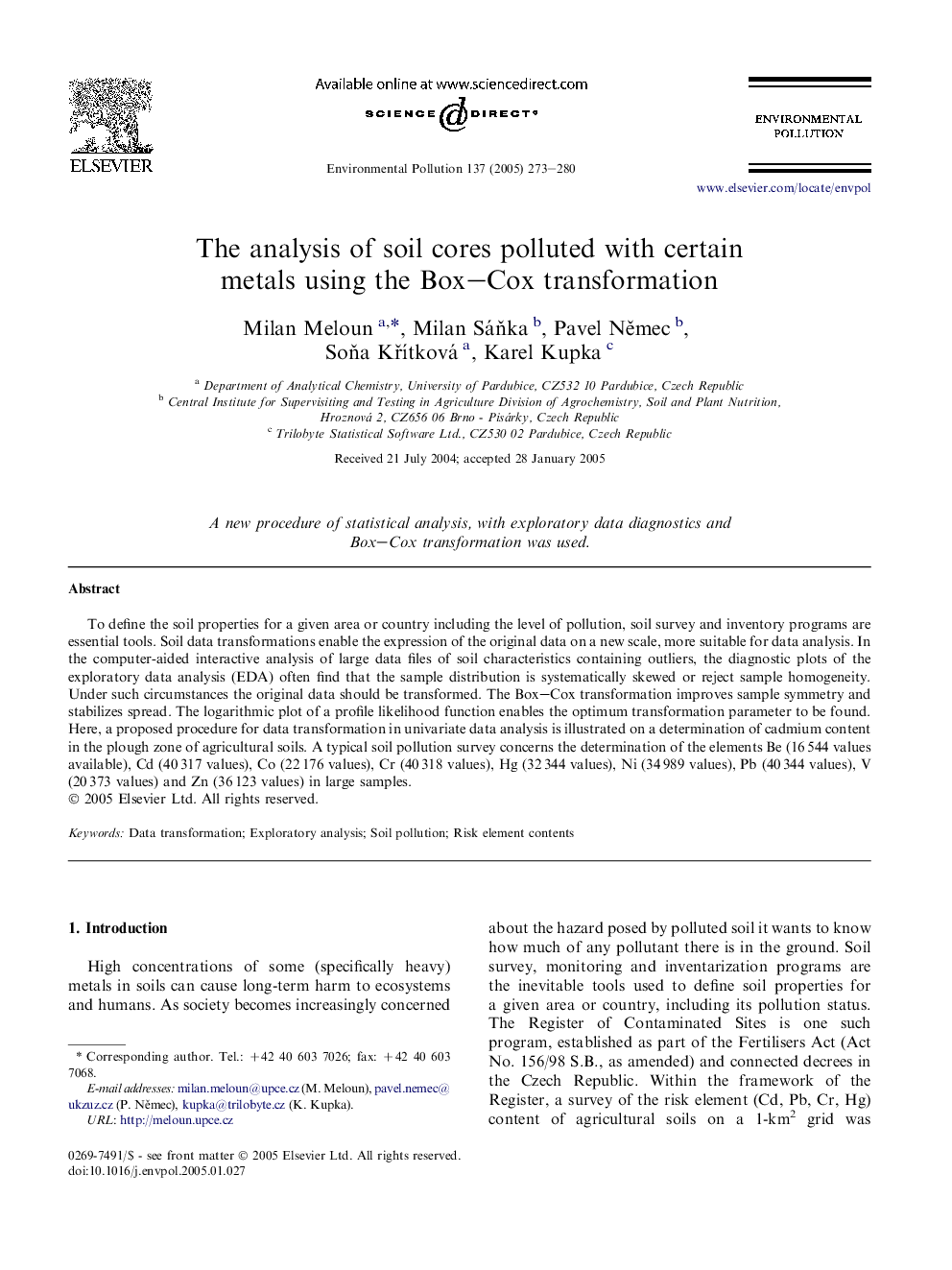| Article ID | Journal | Published Year | Pages | File Type |
|---|---|---|---|---|
| 9456204 | Environmental Pollution | 2005 | 8 Pages |
Abstract
To define the soil properties for a given area or country including the level of pollution, soil survey and inventory programs are essential tools. Soil data transformations enable the expression of the original data on a new scale, more suitable for data analysis. In the computer-aided interactive analysis of large data files of soil characteristics containing outliers, the diagnostic plots of the exploratory data analysis (EDA) often find that the sample distribution is systematically skewed or reject sample homogeneity. Under such circumstances the original data should be transformed. The Box-Cox transformation improves sample symmetry and stabilizes spread. The logarithmic plot of a profile likelihood function enables the optimum transformation parameter to be found. Here, a proposed procedure for data transformation in univariate data analysis is illustrated on a determination of cadmium content in the plough zone of agricultural soils. A typical soil pollution survey concerns the determination of the elements Be (16â544 values available), Cd (40â317 values), Co (22â176 values), Cr (40â318 values), Hg (32â344 values), Ni (34â989 values), Pb (40â344 values), V (20â373 values) and Zn (36â123 values) in large samples.
Related Topics
Life Sciences
Environmental Science
Environmental Chemistry
Authors
Milan Meloun, Milan SáÅka, Pavel NÄmec, SoÅa KÅÃtková, Karel Kupka,
